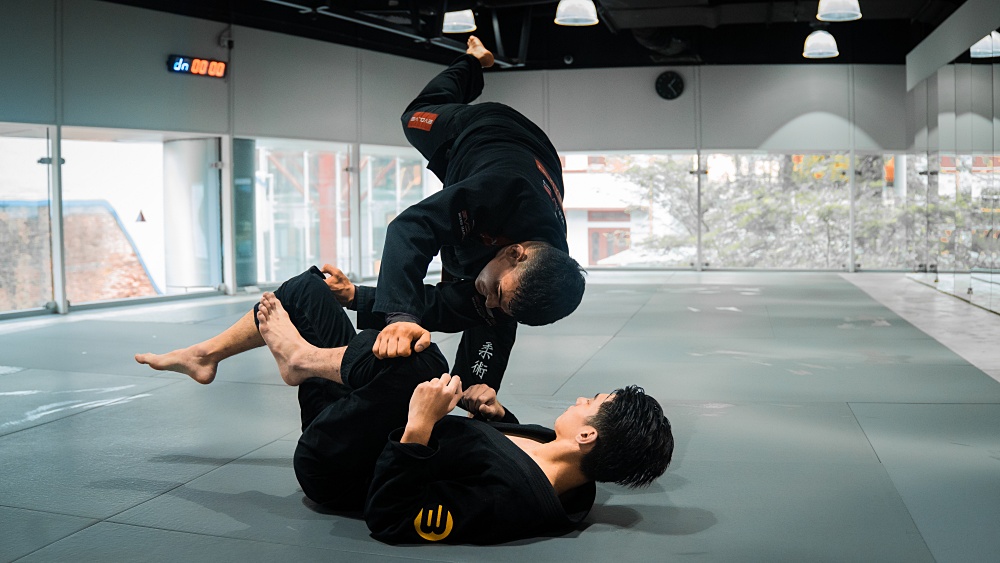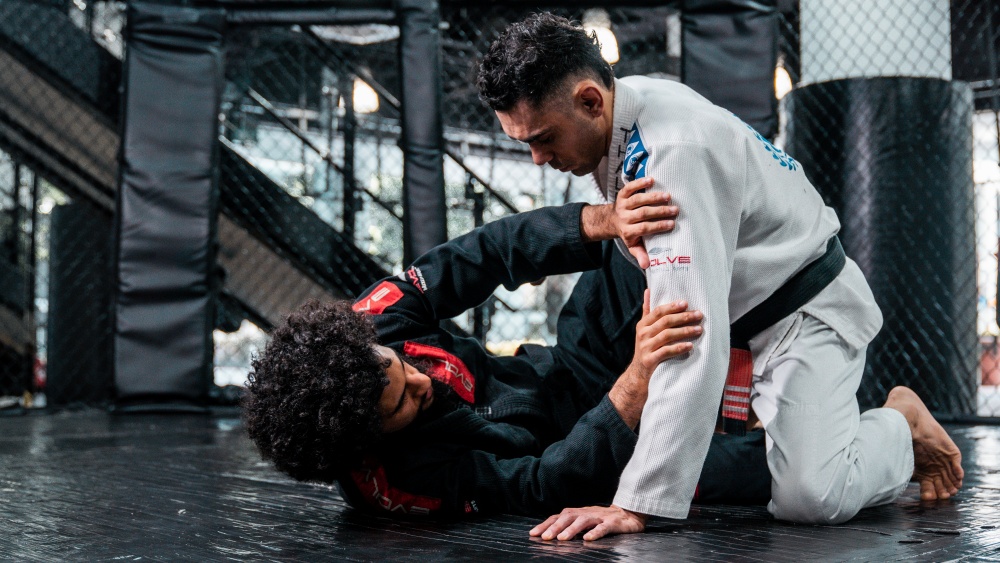Every BJJ match starts with the standup and is followed by closing the distance. In grappling, the first physical contact we make with the opponent is establishing our grips. Strong grips allow grapplers to work ahead of time, leading them to victory. Today, we will discuss the nine most common hand grips used in Brazilian Jiu-Jitsu.
Gripping In BJJ
Gripping is the ideal way grapplers initiate a connection with the opponent. Effectively utilizing grips can allow you to set up your moves and plan from the initial encounter. It creates situations where you will be close enough with the opponent as you have enough contact to initiate your favored attacks, given that you were the first to apply the grips.
When training, it is integral for grapplers to train their hand-fighting techniques, as being the first to apply them leads to a strong start and puts you up ahead of the match. Below are the different hand grips in Jiu-Jitsu.
1) Gable Grip
The Gable grip is named after the wrestling legend Dan Gable. Also known as one of the most powerful grips in grappling and likely the most used grip in No-Gi BJJ, the gable grip is widely used for a variety of controls, typically for body lock passes, back control, open guard, and to finish submissions like the short choke and arm triangle. This grip lets you bring your elbows together, thus creating a tighter squeeze. It is done by locking your palms (palm to palm) and thumbs outside.
2) Seatbelt Grip
With the back mount being the most dominant position in grappling and MMA, the seatbelt grip is the preferred control that comes with it. The seatbelt grip is mainly used to maintain power and pin the opponent while maintaining a chest-to-back connection. It is then typically followed by hand fighting to control the opponent’s hands, leading to a choke or other submissions. It is done by putting your palm on top when holding the opponent from behind.
3) Butterfly Grip
The Butterfly grip is a grip widely used in wrestling. It is also commonly used in BJJ to control the opponent from behind, in open guard when attempting sweeps or attempting takedowns. Like the seatbelt grip, this grip gives you tighter control over the opponent by bringing them closer to your ribcage. It is done by clasping your hands around your forearms.
4) Pistol Grip
The Pistol grip is a grip that can be commonly observed in Gi Jiu-Jitsu. Used to control the opponent’s lapel and wrist, the pistol grip allows you to set up different sweeps and submissions from the open guard because it gives you the ability to control the opponent, thereby neutralizing their movements and executing technical maneuvers. It is done by gripping the opponent’s lapel like a pistol.
5) Scoop Grip
The Scoop grip is extensively used in No-Gi BJJ in both the standup and on the ground. It is defined by using the cupping configuration to control the opponent’s head (collar tie) or limbs. This grip effectively breaks the opponent’s posture and alignment by dragging their head down, controlling their arm/legs, and setting up a series of attacks like takedowns, guard passes, and submissions. Remember to go all the way to the opponent’s opposite ear when scooping their head in the standup for a collar tie.
6) S Grip
Like the gable grip, the S grip is ideally used to secure control over the opponent, be it from guard passing, back control, takedowns, or open guard sweeps. The S grip offers stability and strength, especially in the standup when clinching with the opponent to set up throws and takedowns like the double leg or suplex. The S grip can also be used for different submissions like the north-south choke and Peruvian necktie when fighting on the ground. While this grip variation relies more on finger strength than other gripping techniques, it helps apply control without unclasping the hands.
7) Collar Grip
The collar grip is simply a grip applied on the opponent’s collar. While it may seem simple to apply, this grip is one of the most potent grips used in Gi Jiu-Jitsu, enabling you to become more aggressive and enter different open guards like the collar sleeve guard. When used properly, the collar grip is a solid grip that can break the opponent’s posture by dragging them down, opening up submissions like the loop choke, and is a good starting point for wrestle-ups. Furthermore, the collar grip can be used for sweeps, back takes, and defense against speed passing by framing.
8) C Grip
The C grip is commonly employed to control the opponent’s wrist or limbs and can be used as a means to create kuzushi (off-balancing) that can be used to set up takedowns and sweeps both in the standup or on the ground. Usually, when on the ground, this grip is used with a stiff arm to maintain distance and offers versatility to transition swiftly from offense to defense. The C grip can dictate the pace of a match when used with proper control.
9) Kimura Grip
The kimura grip is the grip used in the classic kimura submission. It is a versatile grip and equally effective in Gi and No-Gi BJJ. While commonly known for its application as a submission hold, this grip can also be used as a controlling mechanism, especially when passing the guard, sweeping the opponent, taking the opponent down, or simply pinning them on the mat.
Conclusion
The variety of grips Brazilian Jiu-Jitsu offers opens up countless possibilities for attacks and defensive repositioning. As BJJ heavily relies on technique and positional dominance, learning when to apply the different grips we discussed will allow you to easily transition from one technique to another, ensuring your pathway to success. Lastly, work your wrist and forearms to build on extra gripping strength, as you’ll surely need it in sparring and competition.
You may also like:

















